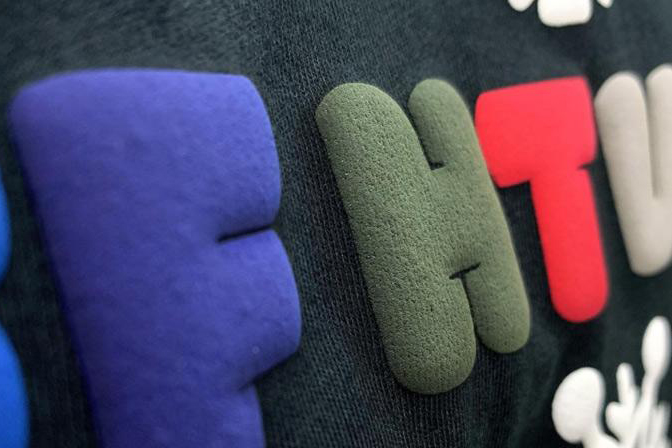The production processes involved in creating puff HTV (Heat Transfer Vinyl) involve a symphony of heat and vinyl. Here's an overview of the key steps in puff HTV production:

1. Material Preparation: The process begins by preparing the base vinyl material. This involves compounding or blending the base polymer (such as polyurethane or polyvinyl chloride) with additives, pigments, and blowing agents. The blowing agents are responsible for creating the foam-like structure when heat is applied.
2. Extrusion or Calendering: The prepared vinyl material is then processed through extrusion or calendering. Extrusion involves melting and shaping the vinyl through an extruder, resulting in a continuous sheet. Calendering, on the other hand, involves passing the vinyl material through heated rollers to create a continuous sheet of the desired thickness.
3. Cooling and Cutting: Once the vinyl sheet is formed, it is cooled to ensure it solidifies and maintains its shape. After cooling, the sheet is cut into rolls or sheets of specific sizes suitable for further processing and usage.
4. Design and Cutting: Puff HTV can be customized with various designs, logos, or artwork. The vinyl sheets are often coated with a release liner to protect the adhesive side. The designs are then applied to the vinyl using techniques like digital printing or vinyl cutting. Vinyl cutters precisely cut out the desired designs, creating intricate shapes or patterns.
5. Application of Adhesive: To enable heat transfer, an adhesive layer is applied to one side of the vinyl sheet. This adhesive layer ensures proper adhesion between the vinyl and the desired fabric or substrate during the heat transfer process.
6. Heat Transfer Process: Puff HTV is applied to fabrics or substrates using a heat transfer process. The vinyl sheet with the adhesive side facing down is placed onto the fabric, and heat and pressure are applied using a heat press machine. This combination of heat and pressure activates the blowing agents within the vinyl, causing it to expand and create the desired puff effect.
7. Cooling and Finishing: After the heat transfer process, the fabric is allowed to cool, ensuring that the puff HTV adheres properly. Once cooled, the release liner is removed, and the fabric is ready for further finishing touches if desired.
Throughout the production process, quality control measures are implemented to ensure the consistency and performance of the puff HTV. This includes testing the foam structure, adhesion strength, color accuracy, and durability of the finished product.
The symphony of heat and vinyl in puff HTV production requires careful formulation, precise cutting, controlled heat application, and quality assurance. By mastering these processes, manufacturers can create high-quality puff HTV that adds dimension and visual interest to garments, accessories, and other textile products.
Kenteer is producing puff htv, please contact us if you need cooperation.
